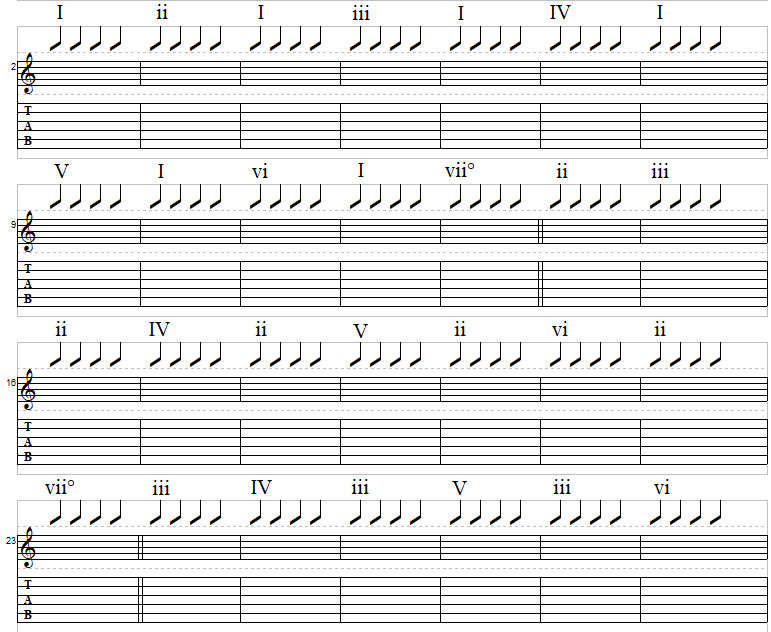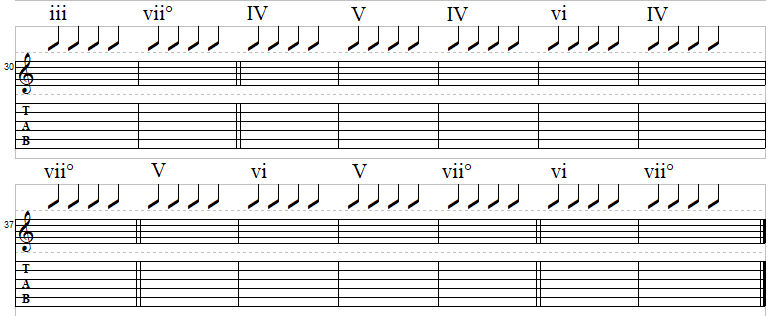One of the easiest beginner guitar exercises, is to learn how to read Roman Numerical chord progressions. The advantage to learning Roman Numerical chord progression placements is understanding how it can be applied to any of the twelve keys in music.
Do you know your Roman Numerals?
Think back to grade school when you learned about Roman numerals. It was strange to see letters read as numbers. In music, Roman numerals help to minimize confusion between the various types of regular numbers, letters and symbols used in reading music and chord charts.
Brief lesson on Roman Numerals as Major (Upper case):
I = 1 (Root), II = 2nd, III = 3rd, IV = 4th, V = 5th, VI = 6th, VII = 7th.
Now, as minor, dominant, diminished and augmented (Lower case):
ii = minor 2nd, iii = minor 3rd, v = diminished 5th, V+ = augmented 5th, vi = minor 6th, vii = dominant 7th, vii° = diminished 7th.
When we use different types of Roman numerals in a chord progression, we are refering to Major, minor, dominant, diminished or augmented chords.
For example, the “IV” in the key of C is the “F” chord. The “vii°” in the key of A is “G#°”.
Here is a chart of all of the keys and their triad chords:
Changing chords clearly in Rhythm.
The following exercises can be used for any of the twelve keys listed in the above chart.
For example, if we use the chords in the key of C, the first twelve measures will read like this: C to Dm, C to Em, C to F, C to G, C to Am and C to B°.
The “double line” at the end of each section denotes the end of that exercise and the beginning of the next one.
Strum each measure with four (4) quarter-note strums. Be sure to use your metronome for this exercise. Set your metronome at around 60-80 bpm. As you get more comfortable in changing your chords clearly in rhythm, increase the bpm to 90-120.
Notice in the structure of the exercise below, there are no repeat chord combinations. This is by design to eliminate redundancy.
Practice this exercise with as many keys and chords that you know. If there are chords you don’t know, you can go to this page to find a list for each of the twelve keys and their triad chords.
Thank-you for subscribing to my SoundHole Guitar newsletter. If you would like to support this newsletter, please consider becoming an exclusive paid subscriber. You will have unconditional access to all of the articles on SoundHole.








